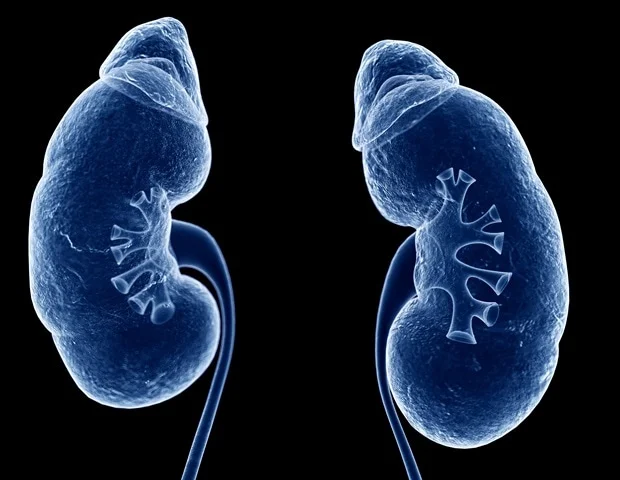
Researchers have further analyzed a known signaling pathway they believe brings them one step closer to understanding the complex physiology of patients with chronic kidney disease (CKD), which might provide a path to new treatment options.
CKD is a complex and unique condition that involves impaired removal of many different toxins from the blood. These toxins, which often are referred to as uremic solutes, then can cause damage to multiple different organ systems, not limited to the kidneys. Patients with CKD are at a heightened risk for complications to the heart and brain, which increases morbidity and mortality.
To understand how uremic solutes causes damage in the kidney and other organs, researchers from Boston University School of Medicine (BUSM) tested a pathway called Aryl Hydrocarbon Receptor (AHR). In previous studies, these same researchers showed that molecules that activate AHR have a toxic effect on blood vessels.
The researchers created an experimental model where they monitored blood levels of different uremic solutes and the levels of AHR in different organ systems. They discovered that, as the levels of uremic solutes increased in the blood, so did the levels of AHR, suggesting that AHR may be responsible for the damage to blood vessels that is seen in CKD, at least in part.
The researchers noted that AHR also increased in the heart, liver, and brain. This is the first study that has been able to directly demonstrate the activation of AHR in different organs and within specific tissues of that organ.
The researchers believe that these uremic solutes (called indoxyl sulfate and kyurenine), could potentially be translated into clinical blood tests that may give a more complete picture about the severity and progression of a patient's kidney disease. Moreover, AHR may be a target for new medication development in the treatment of CKD.
"From a clinical standpoint," explained corresponding author, Vipul Chitalia, MD, PhD, associate professor of medicine at BUSM, "it further adds evidence to the use of AHR inhibitors as effective therapeutics to combat complications associated with CKD and uremic solutes."
These findings appear online in the journal Kidney International.
Boston University School of Medicine
Journal reference:
Walker, J. A. et al. (2019) Temporal and tissue-specific activation of aryl hydrocarbon hydroxylase signaling may be visualized in discrete mouse models of kidney disease. Kidney International. doi.org/10.1016/j.kint.2019.09.029






No comments
Post a Comment